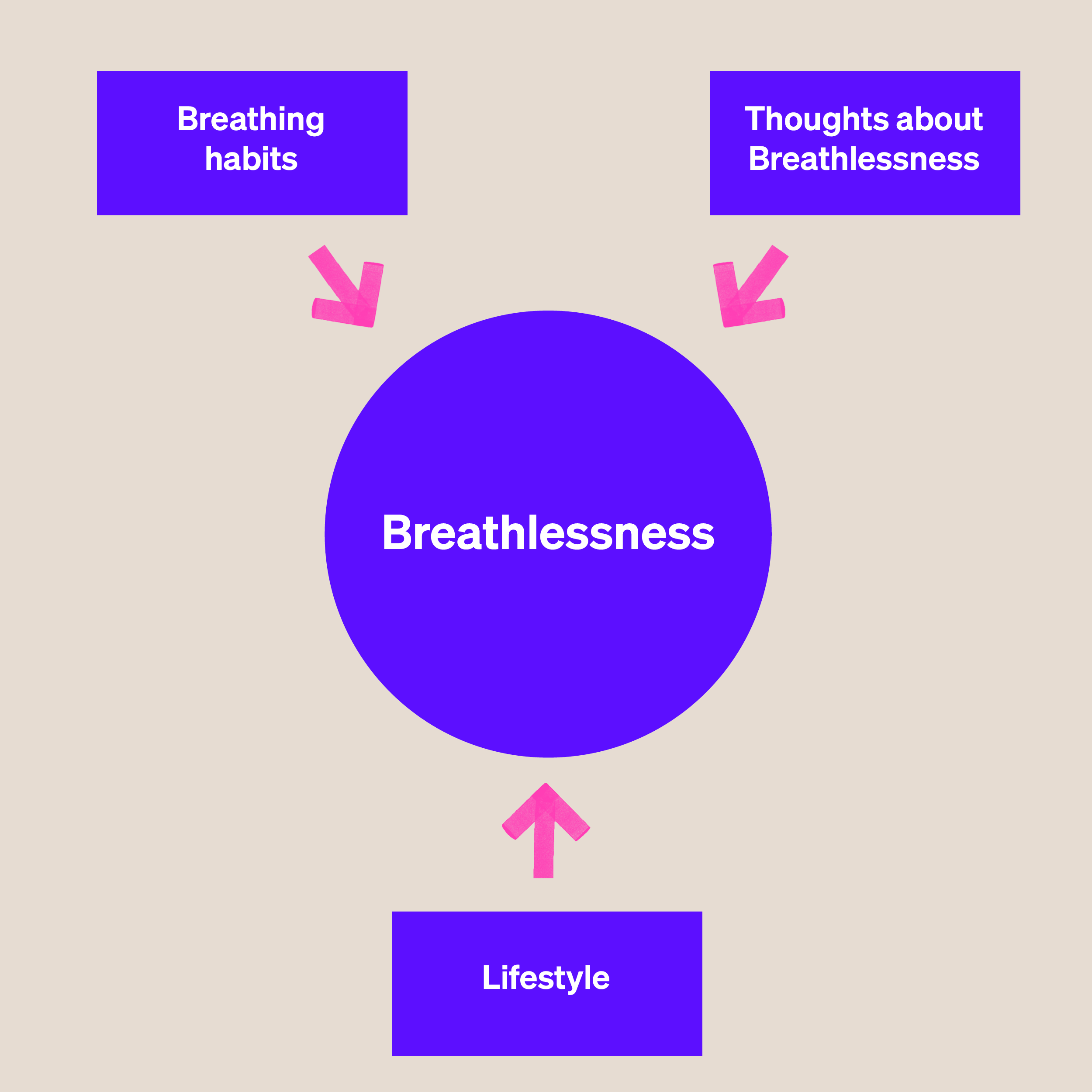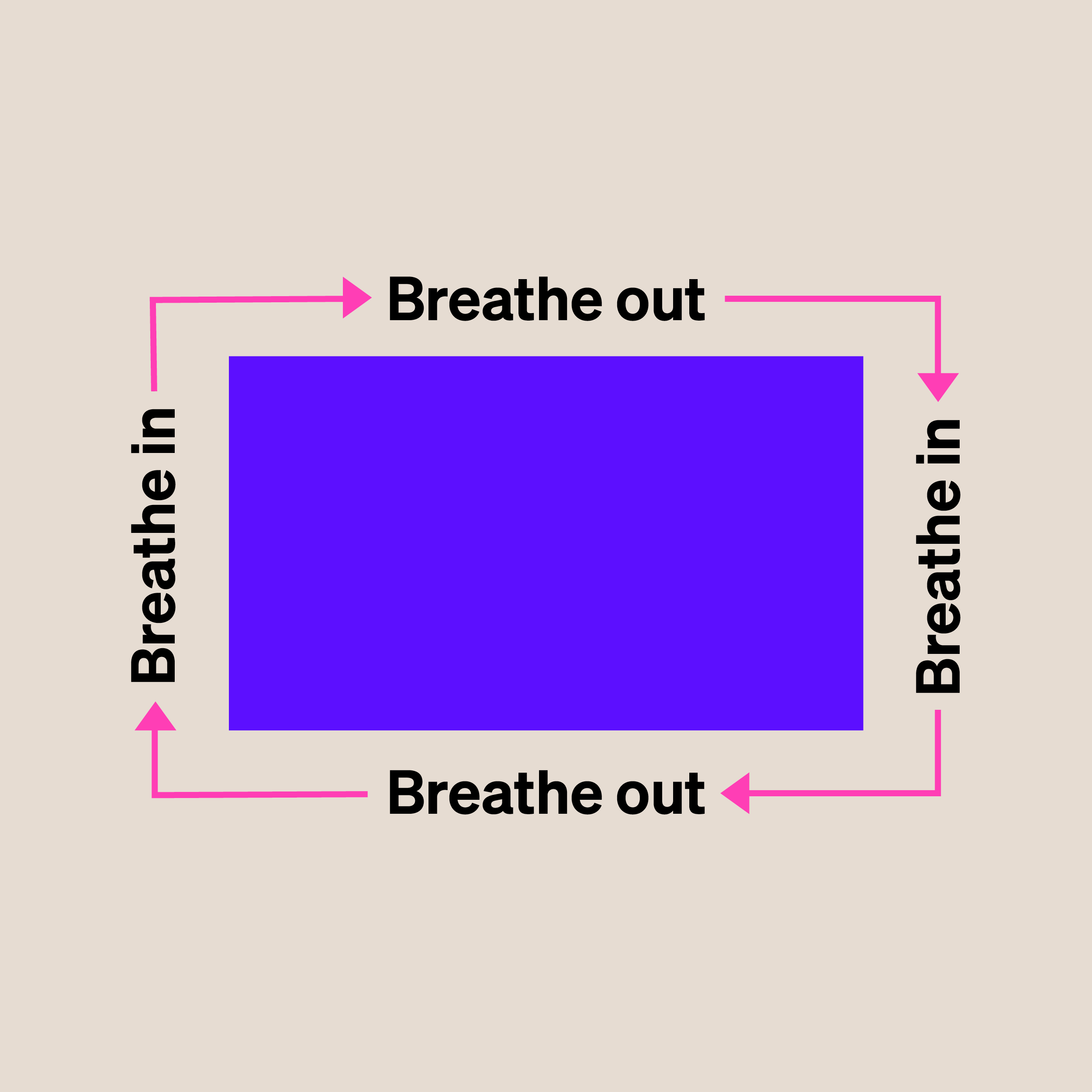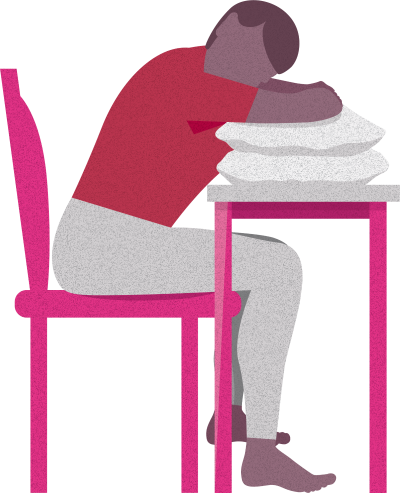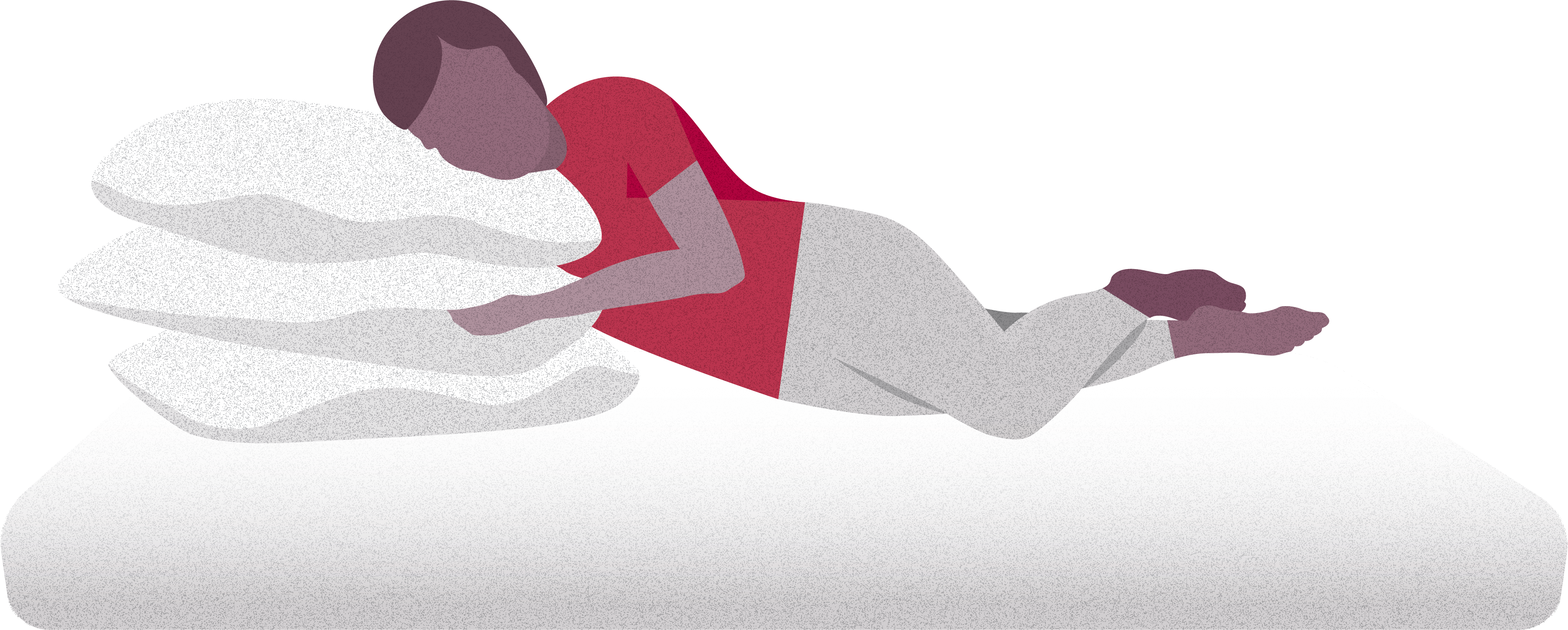What affects breathlessness?
Evidence suggests that lung function tests and scans don’t always show how breathless you feel. This is because it’s not just lung function that affects how out of breath you feel. The way you breathe, your lifestyle, and how you think about breathing also affect breathlessness.

Breathing habits
When you’re out of breath, you may feel like you need more air. You may start to take more air into your lungs or breathe faster. As a result, you may not fully empty your lungs as you breathe out.
This means you might be using the top of your chest more to breathe, instead of using all of your lungs. Breathing like this takes more effort and you may feel more out of breath.
The breathing control and breathing techniques on this page will help you to manage your breathing better.
Thoughts about breathlessness
A worrying thought can make you feel anxious and make you feel breathless. This could make you feel panicked and bring on physical symptoms such as a tight chest or fast breathing.
The breathing control and techniques on this page will help you to manage your breathing when you feel anxious. We also have more information about anxiety and your lung condition.
Lifestyle
You may avoid physical activity because you don’t want to become breathless. However, moving less means that your muscles become weaker, and this can make breathing harder.
It’s a good idea to stay as active as possible to manage your breathlessness. Try our Keep Active programme to help you.
Breathing control
Breathing control means breathing gently, using the least effort. To get used to breathing control, it helps to practice when you are sitting, relaxed and not out of breath. You will then be able to use these breathing control techniques when you are short of breath or anxious.
Staying calm
Learning to stay calm when you get breathless will help you reduce anxiety that can make breathlessness worse.
Relaxed breathing
Relaxed breathing is a technique to help you breathe more efficiently, using your tummy instead of your upper chest. To start, make sure you’re sitting somewhere comfortable with your body relaxed, then:
- Put one hand on your chest and the other on your stomach.
- Close your eyes.
- Slowly breathe in through your nose, with your mouth closed.
- Count for as long as you can up to five.
- The air will reach low into your lungs if you’re relaxed, and your tummy will move out with your hand.
- The hand on your chest should hardly move.
- Breathe out through your mouth, and your tummy will fall gently.
- Gradually try to breathe more slowly. Your out breath should take longer than your in breath.
Breathe a rectangle
Once you’ve tried the relaxed breathing technique, you might find breathing a rectangle useful. You might find it helpful to find something rectangle shaped, such as a TV, book, or window frame.
Follow the sides of the rectangle with your eyes as you use relaxed breathing. Gradually slow the speed at which your eyes move around the edge of the rectangle to slow your breathing.

Breathing techniques
There are different breathing techniques you can try. Ask your physiotherapist or healthcare professional about the right techniques for you to use.
Blow as you go breathing
Use this technique while you are doing things than make you breathless.
- Breathe in before you make the effort. For example, before lifting a heavy bag.
- Breathe out while you’re making the effort. For example, while lifting the heavy bag.
Pursed-lips breathing
You can use this technique to help control your breathing at any time. You can also use it while doing something that makes you breathless.
- Breathe in gently through your nose.
- Purse your lips as if you’re going to blow out a candle.
- Breathe out with your lips in this pursed position. Imagine blowing out a candle or whistling when you breathe out.
- Blow out for as long as is comfortable.
- Do not force your lungs to empty.
Paced breathing
Paced breathing can be done using pursed-lips or blow as you go breathing. You can use it when you’re being active. This technique helps to avoid breath holding.
- Count to yourself while being active. For example, count for one as you breathe in, then, count for one as you breathe out.
- Count for one as you breathe in.
- Count for two as you breathe out.
- Continue this as you move, going up to three as or when you breathe out.
- Your counting should be in line with the steps you take and your pace.
Recovering from breathlessness
Use these positions to help you recover from breathlessness and help you practice your breathing control.
Sitting leaning forward (figure 1)
Lean resting your elbows on your knees.

Leaning against a wall (figure 2)
Lean back or sideways against a wall with your feet slightly apart. Let your hands rest loosely by your sides.

Sit leaning forward at a table (figure 3)
Rest your head and arms on pillows on a table when you’re short of breath.

High side lying (figure 4)
Lie on your side with pillows under your head and shoulders. Make sure your top pillow supports your neck. Slightly bend your knees, hips and top leg.

Videos to help you manage your breathing
Watch our videos that can help people with any lung condition that makes them breathless.

Get support
Call or WhatsApp our Helpline for support with your condition. Get advice on your medicines, symptoms or travelling with a lung condition, or just call us to say hello.






